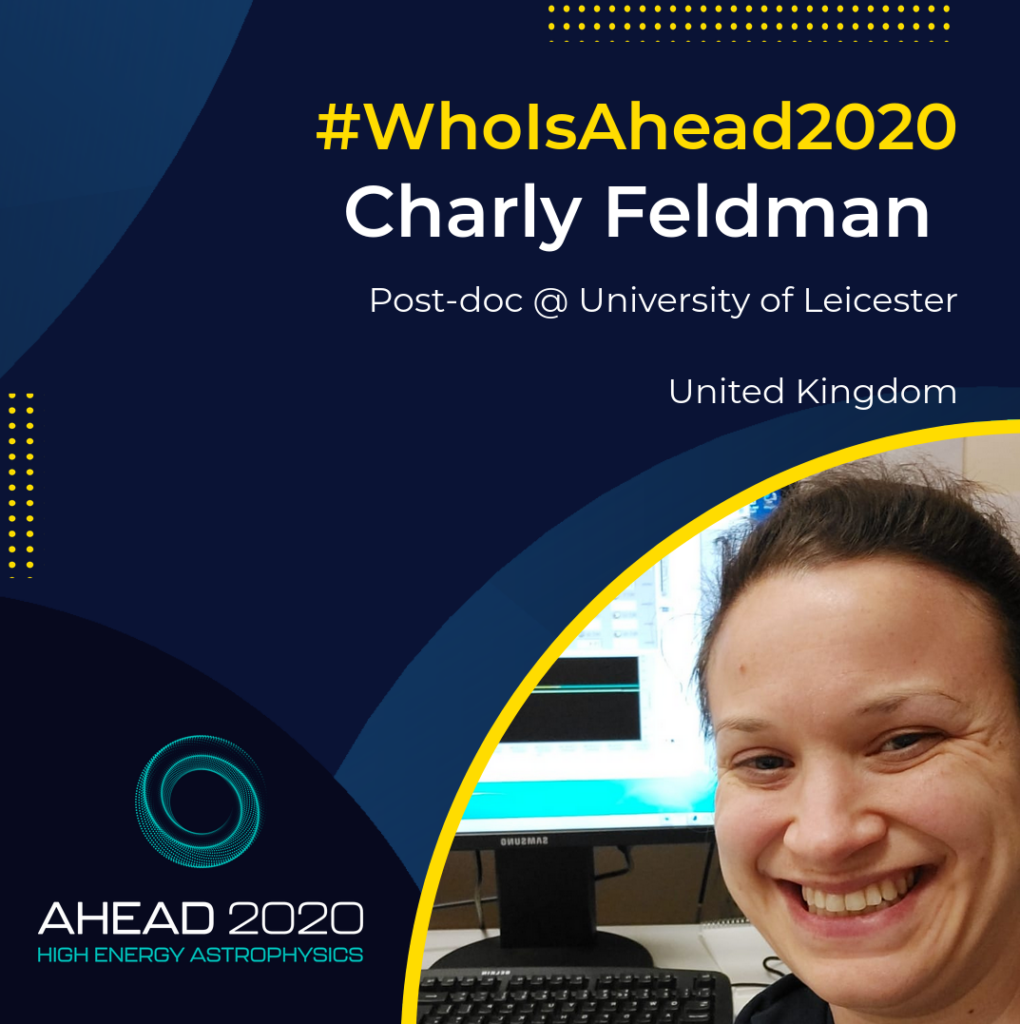🚀 Charly is a Post doctoral research associate working on X-ray optics development, specialising in Micro Pore Optics (MPOs) for lobster eye X-ray telescopes. She has worked on ESA’s BepiColomb MIXS instrument and the MXT on the Chinese-French mission SVOM. She is currently working on the SXI instrument on ESA’s SMILE mission and as optics leader for the SXI on the ESA M5 candidate mission THESEUS. On AHEAD, she is work package leader on developing a new test facility for testing these optics for future large scale X-ray observatories.

How do you describe your journey in astronomy so far?
📣 I came to the University of Leicester in 2006 for my PhD as part of the Smart X-ray Optics consortium, looking in to large and small scale adaptive X-ray optics. I started working on the MIXS instrument for BepiColombo at the end of 2010 and seeing something that I had helped build being launched was one of my proudest moments. Working on AHEAD2020 enables me to develop these optics for future missions, and improve their performance which in turn will improve our understanding of the universe.
Why did you choose to study astrophysics/space sciences?
📣 I have always been fascinated by space and the space race. I look up at the night sky and I want to know whats out there, who is out there, and I want to be there. It excites me, the more we know, the more I want t know.
Do you have a favorite scientific theory?
📣 I have several favourite discoveries, the first image of a black hole was very exciting. Being able to see so close to the edge of the event horizon and for it to match theory as well. Another was the discovery of water on Mars as it increases the possibility of having a base on Mars, which would be incredibly exciting. The images of Saturn during the Cassini fly by where absolutely awe inspiring.
Why is AHEAD2020 important to you?
📣 AHEAD2020 is important to me as it enables essential research and development in to many areas of astrphysics and encourages collaborations between many institutions and scientists from around the world. It also enables scientists to access facilities that they wouldn’t otherwise be able to access.
What is the best word describing astronomy?
📣 AWESOME!
